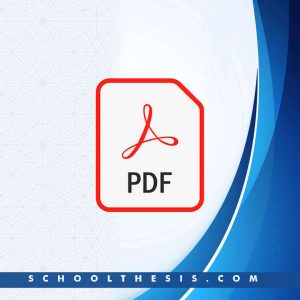
A Comparative Study of the Sociolinguistics of Achebe’s Things Fall Apart and Adichie’s Half of a Yellow Sun
Abstract of A Comparative Study of the Sociolinguistics of Achebe’s Things Fall Apart and Adichie’s Half of a Yellow Sun
This work has dealt with the comparative study on some aspects of sociolinguistics in the novels: Things Fall Apart and Half of a Yellow Sun by Chinua Achebe and Chimamanda Adichierespectively. The two authors applied their linguistic, and social backgrounds for creative effects in their literary works. This creative ingenuity involves the English language, which has overwhelmed many languages because of its unifying function in nations with multilingual communities like Nigeria. The creative abilities of the authors have enabled them to manipulate the language to reflect their sociolinguistic environment. The research compared the two works by exploring the extent and the effectiveness in the use of direct translation, semantic extension, code-switching, proverbs, culturally dependent speech style, loan words, coinages, and hybridization. To do justice to this work, Labov’s Variability Theory and Systemic Functional Linguistics Theory by Michael Alexander Kirkwood Halliday were used because they are functional and contextually-based. In order to do this effectively, the researcher also adopted a descriptive research design to explore the sociolinguistic phenomenon in the two works. It was found that the two works followed the same nativization process in their pattern of exposition and description of their themes and subjects to reflect the Africanization of the English language. Whereas Achebe plunged deeper into the use of these sociolinguistic elements, especially proverbs, Adichie was more encompassing in her exploitation of other language codes apart from the Igbo language. Based on the findings, the researcher suggests more studies into the pragmatic, strategic and discourse analysis in literary works with African backgrounds.
Chapter One of A Comparative Study of the Sociolinguistics of Achebe’s Things Fall Apart and Adichie’s Half of a Yellow Sun
INTROUDUCTION
BACKGROUND TO THE STUDY
Language and society are not independent of each other. They always go
together in the development of a people. In other words, language cannot exist and develop outside the human society. People’s habit of thought regulates and determines their language use because man is, essentially, a linguistic animal. This notion is reflected in language use in literary works. For Femi Akindele and Wale Adegbite, ‘Language is the only creative property unique to human beings’ (92). It is also a means through which human beings socialise among themselves. Besides, it is the greatest asset to man through which he sustains himself.
In this way, an enduring relationship exists between language and society. Tarni Prasad (247) affirms that man ‘learns the language in society but ‘the language structure always follows the social structure and culture.’ He adds that ‘language expresses not only the thought and feelings of the speaker but also the social culture and tradition.’ Still on the interplay of language and society, Akindele and Adegbite remind us that ‘Language does not exist in a vacuum, but it is always contextualized. That is, it is situated within a socio-cultural setting of community’ (3).
It is a known linguistic fact that in language contact situation, a second language (L2) is bound to be influenced by its linguistic environment.

